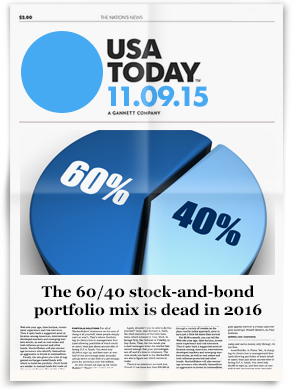The ‘Preferred’ Path to Higher Returns

How can you achieve higher returns in a low-interest rate environment? In his op-ed for the Wall Street Journal, Rebalance Investment Committee member Professor Burt Malkiel explains how.
Now that central banks have pushed short-term interest rates to zero or even to negative readings, all asset prices have risen to unusually high levels and prospective future returns appear to be unattractively low. In a world in which bonds no longer provide safe and steady returns, what is the investor seeking moderate risk and a reliable stream of income to do?
There are no easy answers. The dilemma is particularly acute for retirees. A generation ago they could invest their savings in a 10-year U.S.-government bond and be able to count on a promised interest rate of 6% to 7%. They could also sleep well at night knowing that their portfolios consisted of one of the safest assets in the world.
Today that same asset promises a nominal yield of just 1.6% and a real after-inflation yield that will be negative if the Federal Reserve achieves its 2% inflation target. Good-quality corporate bonds yield well under 4%. The traditional advice that older investors need to allocate a substantial portion of their portfolios to bonds seems to have been overtaken by events.
With the unusual challenges posed by low bond yields today, is there some solution available for investors to escape the dilemma of inadequate fixed-income returns?
I think there is. Investors need to consider bond substitutes that can provide stability, safety and relatively attractive returns. One such substitute is investment-quality preferred stocks.
Preferred stock is a kind of hybrid security that sits between bonds and common stock in a company’s capitalization. Preferreds are senior to common stock in terms of payment of dividends and claims on assets, but junior to bonds. Usually, preferreds have a fixed dividend (although some float with some fixed premium to short-term rates).
Preferreds are rated by the major credit-rating firms. Those offered by large companies carry investment-grade ratings but are rated lower than bonds because of their junior status. They do, however, have a substantial advantage over bonds for individual investors. Bond interest is taxable at regular personal income-tax rates. Preferred stock dividends are generally taxable at long-term capital-gains rates, which under current laws are set at a maximum of 23.8% versus a maximum rate almost twice as high for interest income.
Portfolios of preferred stocks are available through mutual-fund companies and exchange-traded funds. The lowest-cost ETFs have expense ratios below 50 basis points and have dividend yields of about 5.75%. The one negative feature of these ETFs is that they tend to hold 50% or more of their portfolios in financial stocks (especially banks) and thus are not broadly diversified.
Critics point out that bank preferred stocks fell sharply during the 2007-08 financial crisis. They also argue that bank stocks are less desirable today because of regulatory constraints on the banking sector. Banks are pressured to reduce risky but profitable activities such as trading and are required to have much more capital, which tends to reduce their return on equity. But while these constraints may make bank common-stock investments less desirable by limiting their upside potential, they make bank preferred stocks much less risky than they were before the financial crisis and make their 6% yields more dependable.
Preferred stocks are riskier than bonds. But high-quality preferred stocks with attractive dividend streams are relatively stable and are only moderately more volatile than bonds. For example, the preferred stocks of two leading banks, J.P. Morgan and Wells Fargo, are investment grade and yield between 5.5% and 5.75%. Diversified portfolios of preferred stocks can serve investors well as a relatively stable income-producing anchor for the overall portfolio.
It is true that if interest rates rise the prices of preferred stocks may fall along with bonds. But the price declines could be muted. Rising interest rates that reflect stronger economic growth will increase the credit worthiness of preferreds, especially those issued by commercial banks, which benefit from higher rates.
It would be wonderful if investors could still obtain 5.75% yields from the highest-quality securities such as U.S. government bonds. But this is not the world of decades ago. The only way to obtain a reasonably generous and secure income stream is to accept sensible risks. Preferred stocks are one asset class that can be a useful part of an investor’s portfolio in an environment that is starved for income.
This article was originally published in the Wall Street Journal on June 20, 2016. Professor Burton Malkiel is a member of the Rebalance Investment Committee.





